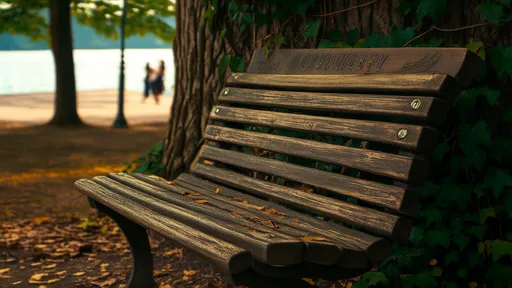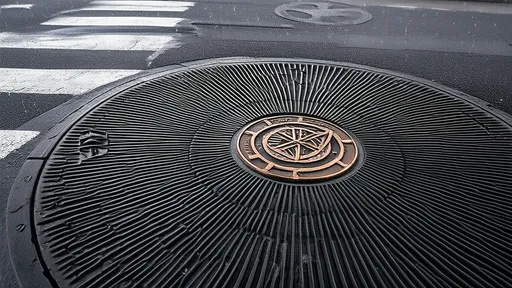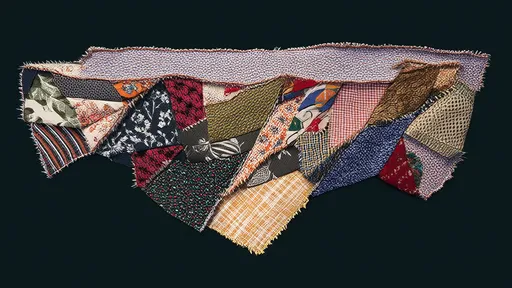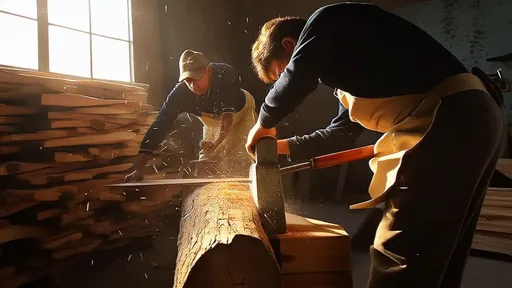The worn wooden bench in the corner of the park carries more than just the weight of passersby—it holds the whispers of time. "The Rings of the Bench: Vows Carved in Woodgrain" is not merely a poetic title but an invitation to explore how ordinary objects become silent witnesses to human stories. Unlike grand monuments or historic landmarks, benches absorb the quiet intimacy of everyday life: first kisses etched into their armrests, the damp imprint of a widow’s tears, the nervous tapping of a job seeker awaiting an interview. These unassuming sentinels of public spaces are archives of vulnerability, their layers of varnish and splinters concealing narratives as rich as the rings of an ancient tree.
To understand a bench is to practice a peculiar kind of archaeology. The scratches near the left edge might trace the restless energy of a child’s toy car; the faint heart-shaped carving, now swollen with rainwater, could mark a teenager’s declaration of undying love. Urban historians have begun cataloging these "wooden diaries," noting how their placement near bus stops or beneath cherry trees shapes the emotional tenor of the confessions they receive. A study from the University of Edinburgh revealed that benches facing west, where people watch sunsets, accumulate more philosophical musings and existential questions, while those near playgrounds bear the joyful chaos of snack crumbs and crayon scribbles.
The very material of benches conspires to preserve memory. Oak, teak, and cedar—each reacts differently to human touch. Oak hardens with age, resisting sentimentality, while cedar softens, its fragrant grain embracing even the faintest pencil marks. Modern synthetic materials, though durable, lack this reciprocity; a plastic bench sheds rain and graffiti alike without absorbing either. Conservationists now face ethical dilemmas: should a bench be sanded down and repainted, erasing decades of accumulated history, or left to weather into illegibility as a testament to time’s passage? The debate mirrors our broader struggle between preservation and progress.
Some benches evolve into unofficial memorials. In London’s Regent’s Park, one seat is perpetually adorned with fresh tulips—a tradition begun by a husband mourning his botanist wife. The plaque simply reads "For Alice, who found heaven in petals." These spontaneous shrines often lack official permission but gain communal protection; even vandals hesitate to deface them. Psychologists suggest these sites fulfill a primal need for tangible grief, offering what digital memorials cannot: a physical space where sorrow can sit unobserved yet never alone. The wood becomes both witness and companion, its creaks answering the weight of human sadness.
The language of benches transcends cultures. From the carved dragon-adorned benches in Beijing’s hutongs to the minimalist steel-and-slats designs in Stockholm, the act of sitting and reflecting appears universally human. Anthropologist Dr. Elena Petrov documented how elderly men in Istanbul’s Kadıköy district hold daily "bench parliaments," solving neighborhood disputes with the authority granted by their chosen seat. Meanwhile, in Rio’s favelas, brightly painted benches serve as both social hubs and status symbols—their colors declaring allegiance to local samba schools. This global bench dialect reveals surprising commonalities: armrests worn smooth by generations of elbows, the universal habit of leaving just enough space for a hypothetical stranger.
Climate change now threatens these wooden chronicles. Increased humidity warps seating slats, erasing delicate carvings; extreme heat cracks wood open like forgotten promises. Some cities have started "bench adoption" programs, inviting residents to sponsor preservation treatments for their favorite seats. In Kyoto, where centuries-old benches line philosopher’s paths, artisans use traditional urushi lacquer techniques to stabilize the wood without obscuring its history. These efforts acknowledge that while benches may not be high art, they constitute a living museum of collective emotion—one that demands protection not behind glass, but under open skies where new stories can still take root.
Perhaps the most profound lesson benches teach is the art of temporary belonging. Unlike chairs that claim ownership—"this is my desk chair," "that’s Dad’s armchair"—benches democratize seating. Their very design invites strangers to share space without requiring interaction. In an era of digital isolation and polarized discourse, the humble bench persists as a rare neutral territory. To sit is to momentarily join an unspoken fellowship: all who have paused here, all who will come after. The rings within the wood may count years, but the impressions upon them measure something far more precious—the quiet, enduring proof that no one truly sits alone.
As dusk falls on any given bench, shadows elongate the carved initials and stretch the ghostly outlines of absent sitters. The wood exhales the day’s warmth, preparing to receive night’s confessions—a student’s anxious muttering over tomorrow’s exam, a security guard’s grateful sigh at the end of a double shift. These are the vows whispered into woodgrain, the uncelebrated sacraments of ordinary life. They ask no permanence beyond the next rainstorm, no witness besides the patient timber. And yet, in their fleetingness, they achieve a kind of immortality: the assurance that someone, somewhere, will always need a place to sit and be.

By /Aug 8, 2025

By /Aug 8, 2025

By /Aug 8, 2025

By /Aug 8, 2025

By /Aug 8, 2025

By /Aug 8, 2025

By /Aug 8, 2025

By /Aug 8, 2025

By /Aug 8, 2025

By /Aug 8, 2025

By /Aug 8, 2025

By /Aug 8, 2025

By /Aug 8, 2025

By /Aug 8, 2025

By /Aug 8, 2025

By /Aug 8, 2025

By /Aug 8, 2025

By /Aug 8, 2025

By /Aug 8, 2025

By /Aug 8, 2025